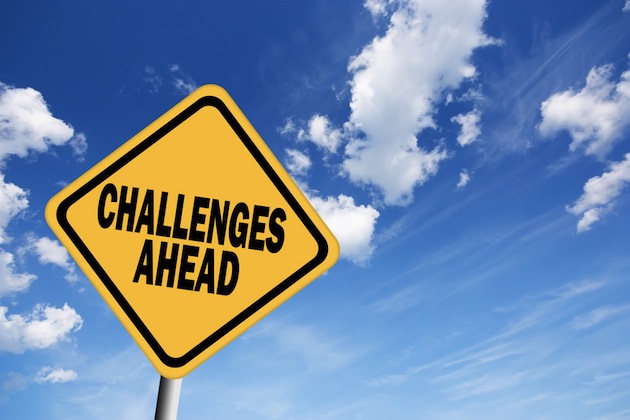
![]() This month Digiday will examine how the modern brand tackles the thorny issue of social media return on investment. It’s no longer good enough for brands to guesstimate what’s working and what’s not in social. For the next four weeks, we’ll highlight how major marketers are gauging their social efforts. The series is made possible through the sponsorship of RocketFuel, a provider of artificial intelligence-based advertising products.
This month Digiday will examine how the modern brand tackles the thorny issue of social media return on investment. It’s no longer good enough for brands to guesstimate what’s working and what’s not in social. For the next four weeks, we’ll highlight how major marketers are gauging their social efforts. The series is made possible through the sponsorship of RocketFuel, a provider of artificial intelligence-based advertising products.
Digiday asked brands and agencies, “What are the biggest challenges to measuring social’s ROI?”
Scott Gulbransen, director, social business strategy, H&R Block
The biggest challenge in measuring ROI is that many times ROI isn’t the objective for social. There’s no doubt social marketing and engagement can deliver sales and conversion, but not all programs and interactions are built to drive it. Many times we use social much more effectively as a top of funnel activity where ROO — or return on objective — is the business goal. That doesn’t mean we don’t track crucial KPIs or measure, it’s just different. Many times the question on ‘what’s the ROI of social’ is the wrong question. Social has already proven incredibly useful and valuable in being a top of funnel driver of customer engagement and loyalty. It also helps brands like ours retain clients and helps us reduce cost on the customer service side. Sometimes when people ask you what the ROI of a social program is, we need to be confident and push back and tell them it’s the wrong question in the first place.
Adam Kmiec, director, global digital marketing and social media, Campbell Soup
The challenge isn’t what to measure or when to measure. It’s not even how we derive insights from the metrics. The biggest challenge is convincing people to believe the ROI metrics. When the numbers look too “good,” we downplay them. When they don’t meet our expectations, we offer excuses for why the data is “tainted.” The best thing we could do to solve the social media ROI conundrum is to start trusting what the numbers are telling us.
Joe Barbagallo, manager of social media, Volvo
The biggest challenge to measuring social media ROI is determining, per initiative and per platform, what the most relevant KPIs are to measure against and parse our the most valuable interactions. Yes, volume of likes, repins, retweets, views and comments are a factor, but a marketer needs to determine what the most valuable interactions are around your content that are driving that key message.
A campaign can accrue a large volume of social interactions, but if those social interactions aren’t moving the needle per your business goals (driving new consideration and new exposure), have you really hit the mark? Determining of those social interactions, which are indeed moving the needle, is the hard part. This requires digging a bit deeper. For example, it’s great when you have a consistent group of fans engaging with your content (advocacy), but the real value comes into play when those fans expose your brand to a new audience. Each campaign, respective of the platform and brand, may be designed to hit slightly different goals, but in the end, social media campaigns are designed to drive awareness and consideration.
Driving sales are important and are a component of all social media campaigns, but the relationship-building nature of social media isn’t designed to directly do that, so measuring strictly against sales or leads isn’t revealing the full picture. They may give you a dollar amount, but social media is designed differently. How do you put a value on a comment, share, view, exposure, perception change or consideration? Through determining what the most valuable engagement, sharing and earned reach generated around that content or key message is. In the end, it must all back out into your overall business objectives.
Erich Marx, social media chief at Nissan
The biggest challenge is an unclear consensus in most organizations as to what result social should drive. Should social media drive sales? Should social drive loyalty? Should social drive engagement and advocacy? Or is it enough for social to simply supplement reach? Until there is agreement organizationally on what the social goal is, and what is ultimately most important, measurement of ROI that has any meaning will be a struggle.
More in Marketing

WTF is the CMA — the Competition and Markets Authority
Why does the CMA’s opinion on Google’s Privacy Sandbox matter so much? Stick around to uncover why.

Marketing Briefing: How the ‘proliferation of boycotting’ has marketers working understand the real harm of brand blockades
While the reasons for the boycotts vary, there’s a recognition among marketers now that a brand boycott could happen regardless of their efforts – and for reasons outside of marketing and advertising – that will need to be dealt with.

Temu’s ad blitz exposes DTC turmoil: decoding the turbulent terrain
DTC marketers are pointing fingers at Temu, attributing the sharp surge in advertising costs across Meta’s ad platforms to its ad dollars.





